BBM 413 Fundamentals of Image Processing
Course Project
Fall 2017
Overview
The course project is an opportunity for you to apply what you have learned in class to a problem you are interest in and get more hands-on experience. Within the scope of this project, you are going to perform an in-depth empirical evaluation and analysis of two or more related methods. Through this comparative analysis, you are expected to conduct qualitative and quantitative analysis based on performance metrics and determine the strengths and weaknesses of the methods.Final Project Ideas!
We provide you some project ideas below to start. You can choose a topic that falls outside given list.- Image Deblurring When we use a camera, we want to get the images as close to perfect. But this is not always the case due to many factors such as camera shake, object movement etc. Image deblurring is used to solve mentioned problems and described as removing blur and restoring a sharp image.
- Image Denoising Image denoising is one of the oldest problems in image processing and various approaches have been proposed to deal with this problem. The underlying goal in image denoising is to recover the original image from noisy version of it.
- Image Enhancement Image enhancement is used to improve the interpretability of information in images for human viewers, or to make image more suitable input for other image processing applications.
- Mosaicing and Registration Image Registration is the process of matching two or more images taken at different times from different viewpoints.
- Image inpainting Inpainting also known retouching is an artistic synonym and was historically done manually by painters for removing defect from paintings and photographs. Image inpainting refers to restoration methods which means completion of missing parts in the picture.
- Segmentation Segmentation is the process of partitioning an the image into meaningful subfields. This process helps simplfy images in order to analyze easily.
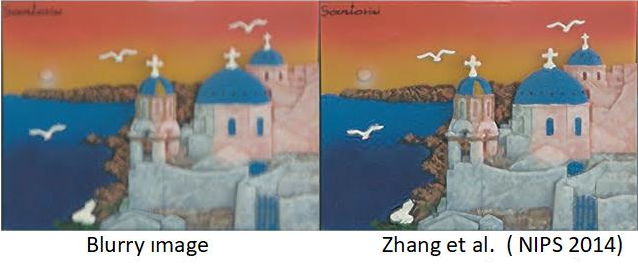
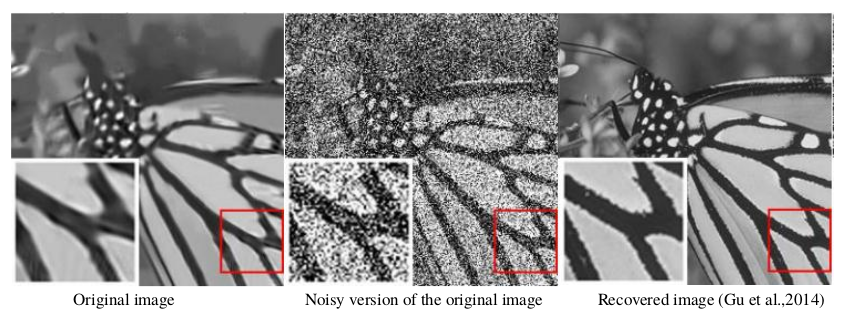
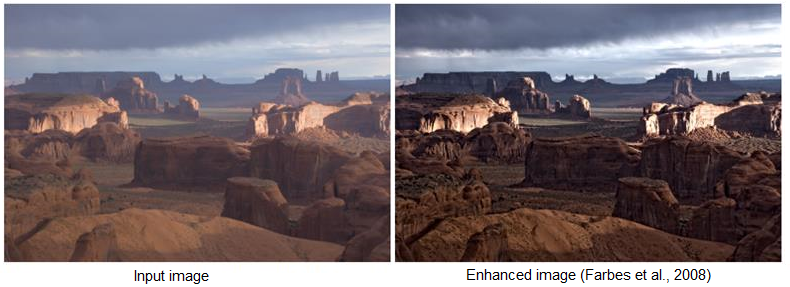

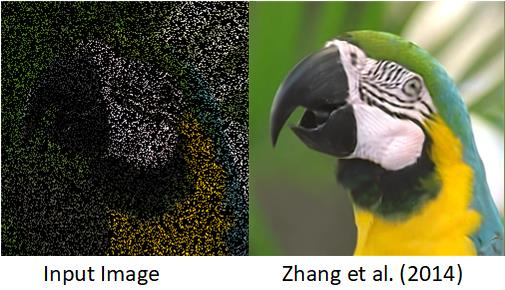
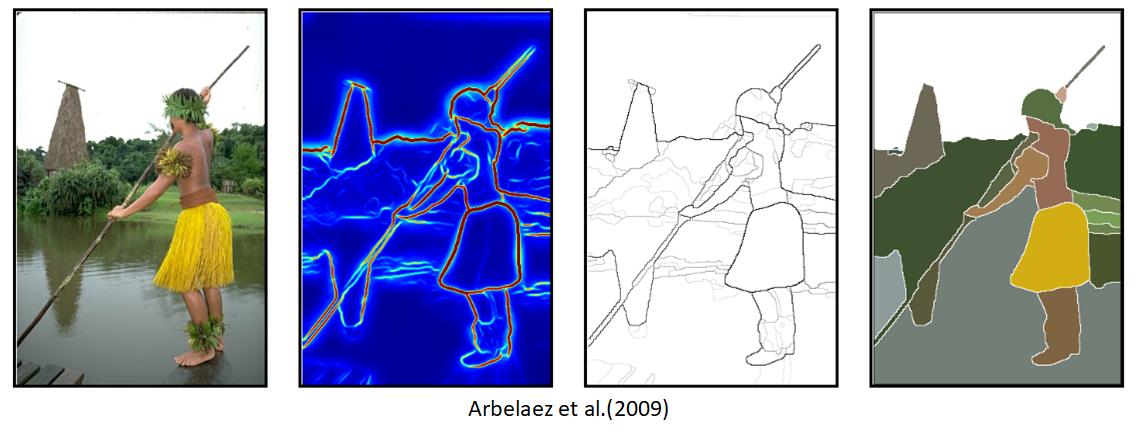
Recommended readings
1. Haichao Zhang, David Wipf and Yanning Zhang, Multi-Image Blind Deblurring Using a Coupled Adaptive Sparse Prior, CVPR 2013
2. Haichao Zhang and Jianchao Yang, Scale Adaptive Blind Deblurring, Advances in Neural Information and Processing Systems (NIPS) 2014
3. Jinshan Pan, Zhe Hu, Zhixun Su, and Ming-Hsuan Yang, Deblurring Text Images via L0-Regularized Intensity and Gradient Prior, IEEE Conference on Computer Vision and Pattern Recognition (CVPR) 2014
4. S. Cho and S. Lee. , Fast Motion Deblurring, ACM Transactions on Graphics (SIGGRAPH ASIA 2009)
5. L. Zhong, S. Cho, D. Metaxas, S. Paris, and J. Wang. H, Handling Noise in Single Image Deblurring using Directional Filters, IEEE Conf. Computer Vision and Pattern Recognition (CVPR) 2013
6. Y. Tai and S. Lin. Motion-aware noise filtering for deblurring of noisy and blurry images CVPR 2012
7. J. Zhang, D. Zhao, W. Gao. Group-based Sparse Representation for Image Restoration IEEE Transactions on Image Processing, 2014
8. M. Zhou, H. Chen, J. Paisley, L. Ren, L. Li, Z. Xing, D. Dunson, G. Sapiro and L. Carin, Nonparametric Bayesian dictionary learning for analysis of noisy and incomplete image, IEEE Transactions on Image Processing 2012
9. W. Dong, G. Shi, and X. Li, Nonlocal image restoration with bilateral variance estimation: a low-rank approach, IEEE Transactions on Image Processing 2013
10. P. Arbelaez, M. Maire, C. Fowlkes, and J. Malik. From Contours to Regions: An Empirical Evaluation, CVPR 2009
11. B. Peng and L. Zhang, Evaluation of Image Segmentation Quality by Adaptive Ground Truth Composition, ECCV 2012
12. Yu Li, Fangfang Guo, Robby T. Tan, Michael S. Brown A Contrast Enhancement Framework with JPEG Artifacts Suppression, ECCV 2014
13. Capel, David, and Andrew Zisserman. Automated mosaicing with super-resolution zoom., CVPR 1998
14. Farbman, Zeev. Edge-preserving decompositions for multi-scale tone and detail manipulation., ACM Transactions on Graphics (TOG), 2008.
Important Dates
Proposal: due October 31, 2017Progress reports:due November 28, 2017
Final reports: due January 9, 2018
Grading
The course project constitutes of %16 of the grade.
Proposal (2%)Progress report (4%)
Final report (7%)
Presentation (3%)
Collaboration Policy
Each project group comprises of maximum 3 students. Students who are not included a project group will be randomly assigned.
Project Proposal
Each project group should submit a half page project proposal about their project topic by October 31, 2017. The proposal should include:
- The description of the problem clearly
- Why the problem is interesting
- Related work
- Which performance metrics will be used to evaluate selected approaches
Progress Report
Each student should submit a project progress report by November 28, 2017. The report should be minimum 2 pages and should describe the following points as clearly as possible:
- Problem statement
- Related work
- The methodologies in detail
- Primary strengths and weaknesses of the approaches
- Preliminary results and additional comments
Final Report and Presentation
Each student is expected to submit a project report prepared using the style files provided in the course web page. The report should be maximum 6 pages and should be structured as a research paper. It will be graded based on clarity of presentation and technical content. A typical organization of a report might follow:
- Title, Author(s).
- Abstract
- Introduction
- Related Work
- The Approach
- Results
- Conclusions
- References
© Hacettepe University